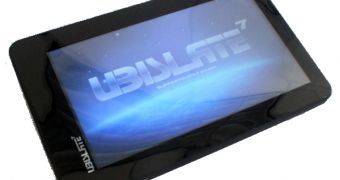One would think that the Aakash tablet would be enough to fill the spot of a super-affordable tablet, but the Indian government is not of the same opinion.
India just revealed a new slate that customers will start using at some point in the near future.
Since it is not possible to suddenly provide Indian schools with more teachers, the government is trying to at least partially make up for it.
The Aakash, an Android tablet with a price of $35 (26 Euro), was the first step in that direction.
The Ubislate 7 is the second one: a new Android tablet that has a slightly better version of the Android operating system and several other improvements.
The benefits are reflected in the price, but the sum of 2,999 Indian rupees ($57 / 43.61 Euro) is still incredibly low by any standards.
The 7-inch newcomer, scheduled for availability in January, 2012, runs Android 2.3 and relies on a Cortex A8 ARM CPU (the base clock is of 700 MHz).
For the sake of comparison, Aakash had an ARM chip with a frequency of 366 MHz and the Android 2.2 OS.
We say “had” because the item is no longer available after the sales in October. Bookings had to be closed within days.
“We have closed bookings for Akash and opened online pre-bookings for the second generation Akash tablet,” a Datawind spokesperson said.
The Ubislate 7 has a touchscreen with a native resolution of 800 x 480 pixels, 256 MB of RAM (random access memory), WiFi, GPRS for SIM cards (Aakash lacked this), 2GB of storage space, a microSD card slot (32 GB top capacity) and USB 2.0 (one port).
Official word is that HD video playback is fully supported and that the battery life is of 3 hours (3,200 mAh model instead of 2,100 mAh).
One thousand should be manufactured each day once DataWind grows into the rhythm.

 14 DAY TRIAL //
14 DAY TRIAL //